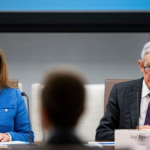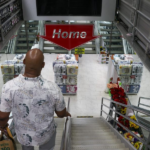This leads to a significant caveat: expenses rose 14% year-over-year, as the company reinvested in technology and expanded risk management. It also cited “higher variable customer engagement costs driven by increased Card Member spending and usage of travel-related benefits,” meaning that the bells and whistles that come with the premium cards are so enticing they’re chipping away at Amex’s margin somewhat. Still, the card issuer reaffirmed its outlook 8%–10% revenue growth and full-year earnings per share of $15-$15.50.
Millennial spending rose 10%, while Gen Z cardholders grew their spend at a somewhat astonishing 40% (albeit from a smaller base). This generational shift bodes well for the premium space: not only older, established wealth but younger, upwardly mobile clients are embracing the brand’s luxury value proposition.
Spending is robust, but so is the financial health of Amex’s clientele. The company boasted the lowest projected credit card loss rate and the highest projected return on assets in the Federal Reserve’s 2025 stress tests—a testament to the resilience and stability of its cardholders even in theoretical economic downturns.
For the second quarter, Amex’s net write-off rate inched lower to 2.0% (from 2.1% a year ago), meaning bad debts that are uncollectible. It also said overall credit performance remains “best in class.” These are other ways of saying that the overwhelming majority of customers are not only spending—they’re also reliably paying their bills.
This goes for the younger card members, too. Lakayak noted on the call that the delinquency rates for U. S. millennial and Gen Z customers aren’t just better than the industry average for those age groups, but they’re also “nearly 40% better than the industry average for older age groups.”
Comments on the call also extended to the fact that the premium American Express card is offering too much of a good thing, as its airport lounges deal with access and overcrowding issues. There are just too many affluent cardholders who want the lounge experience before they fly. “We’re trying to make the lounges bigger,” CEO Steve Squeri said in response to a question from his investor relations team. He also said they have to get “innovative” because the lounges are just so popular, citing a “sidecar” arrangement they used in the Las Vegas airport, “which is a more of a small kind of, I don’t know, maybe call it a speakeasy kind of of lounge, where if you just want to go in for a quick drink or grab something quickly, you can do that.”
The record revenue—and climbing expenses—indicate this will be popular for some time to come. A long runway, indeed.
For this story, Fortune used generative AI to help with an initial draft. An editor verified the accuracy of the information before publishing.









